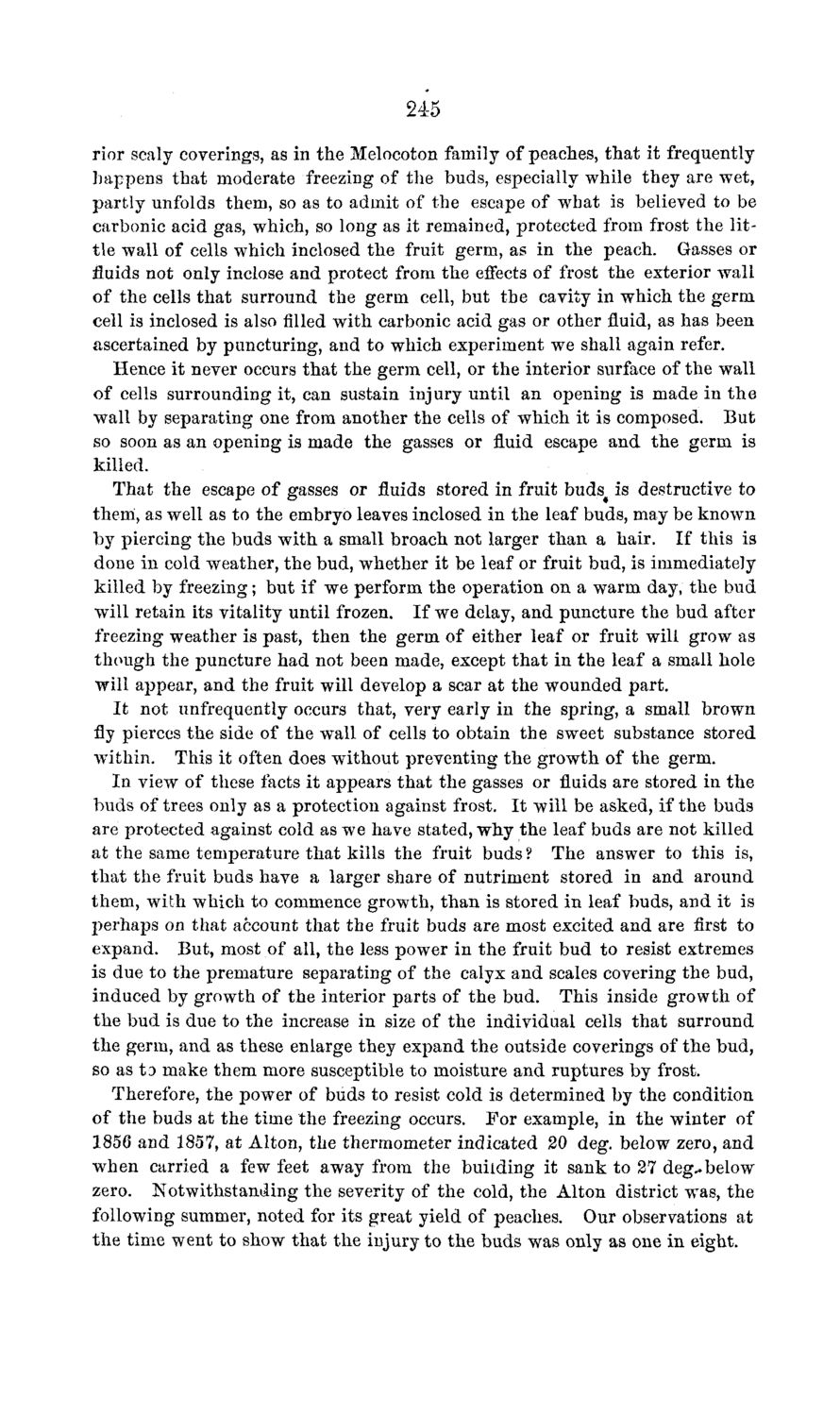| |
| |
Caption: Board of Trustees Minutes - 1869
This is a reduced-resolution page image for fast online browsing.

EXTRACTED TEXT FROM PAGE:
245 rior scaly coverings, as in the Melocoton family of peaches, that it frequently happens that moderate freezing of the buds, especially while they are wTet, partly unfolds them, so as to admit of the escape of what is believed to be carbonic acid gas, which, so long as it remained, protected from frost the little wall of cells which inclosed the fruit germ, as in the peach. Gasses or fluids not only inclose and protect from t h e effects of frost the exterior wall of the cells that surround the germ cell, but the cavity in which the germ cell is inclosed is also filled with carbonic acid gas or other fluid, as has been ascertained by puncturing, and to which experiment we shall again refer. Hence it never occurs that the germ cell, or the interior surface of the wall of cells surrounding it, can sustain injury until an opening is made in t h e wall by separating one from another the cells of which it is composed. But so soon as an opening is made the gasses or fluid escape and the germ is killed. That the escape of gasses or fluids stored in fruit buds is destructive to them, as well as to the embryo leaves inclosed in the leaf buds, may be known by piercing the buds with a small broach not larger than a hair. If this is done in cold weather, the bud, whether it be leaf or fruit bud, is immediately killed by freezing; but if we perform the operation on a warm day, the bud will retain its vitality until frozen. If we delay, and puncture the bud after freezing weather is past, then the germ of either leaf or fruit will grow as though the puncture had not been made, except t h a t in the leaf a small hole will appear, and the fruit will develop a scar at the wounded part. I t not unfrequently occurs that, very early in the spring, a small brown fly pierces the side of the wall of cells to obtain the sweet substance stored within. This it often does without preventing the growth of the germ. In view of these facts it appears that the gasses or fluids are stored in the buds of trees only as a protection against frost. It will be asked, if the buds are protected against cold as we have stated, why the leaf buds are not killed at the same temperature that kills the fruit buds ? The answer to this is, t h a t the fruit buds have a larger share of nutriment stored in and around them, with which to commence growth, t h a n is stored in leaf buds, and it is perhaps on t h a t account that the fruit buds are most excited and are first to expand. But, most of all, the less power in the fruit bud to resist extremes is due to the premature separating of the calyx and scales covering the bud, induced by growth of the interior parts of the bud. This inside growth of the bud is due to the increase in size of the individual cells t h a t surround the germ, and as these enlarge they expand the outside coverings of the bud, so as tD make them more susceptible to moisture and ruptures by frost. Therefore, the power of buds to resist cold is determined by the condition of the buds at the time the freezing occurs. F o r example, in the winter of 1856 and 1857, at Alton, the thermometer indicated 20 deg. below zero, and when carried a few feet away from the building it sank to 27 deg.*below zero. Notwithstanding the severity of the cold, the Alton district w^as, the following summer, noted for its great yield of peaches. Our observations at t h e time went to show that the injury to the buds was only as one in eight.
| |